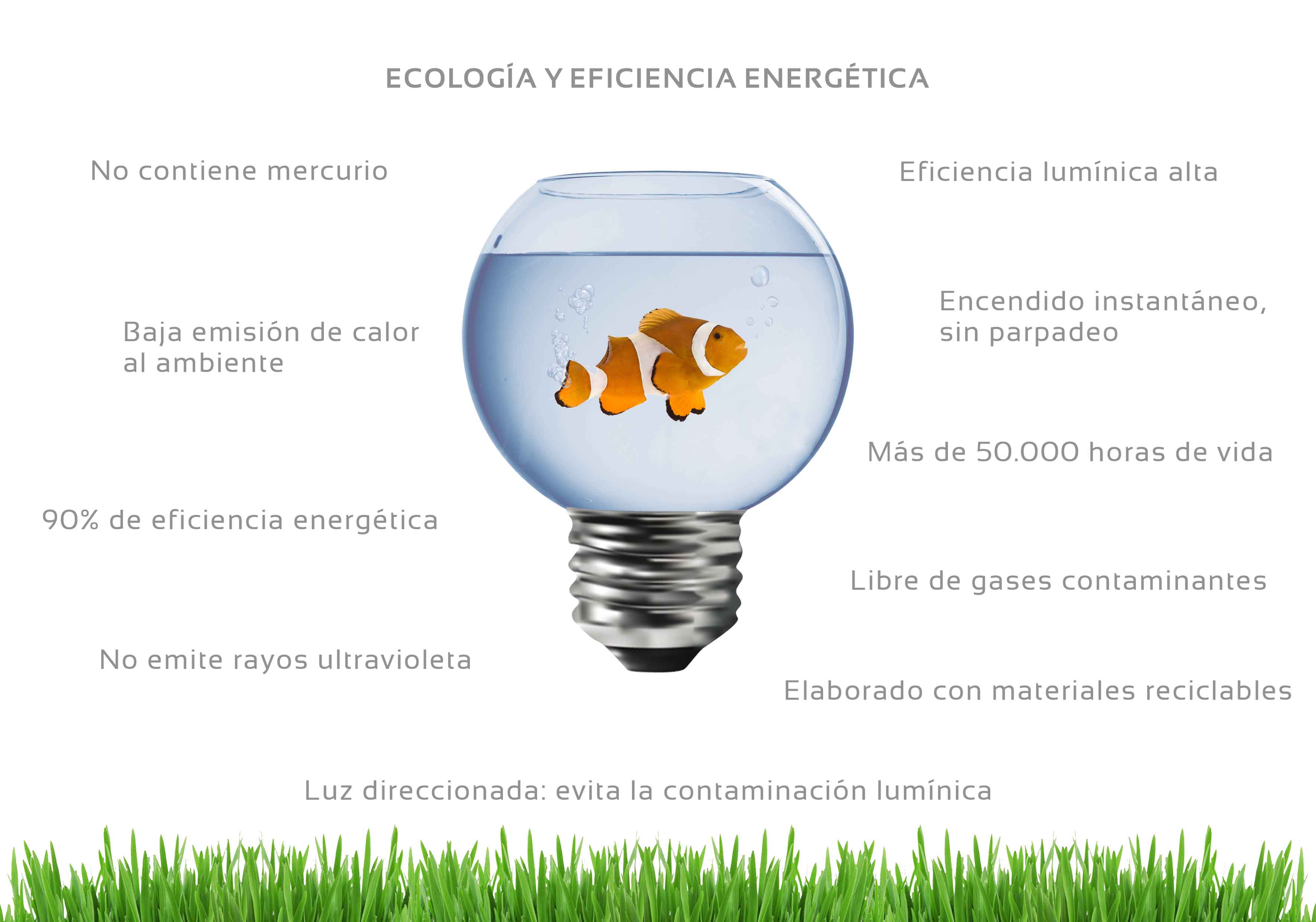Environmental benefits of using LEDs
|
|
|
The current shortage of resoures has made energy saving a principal concern for large companies. Optimising energy resources is now undeniably one of the mainstays for making companies work properly. In ecological terms, development and progress are normally synonymous with depletion of natural resources and pollution. Environmental problems, coupled with the need to reduce dependence on traditional energy sources such as oil and other fossil fuels, have led to the search for alternative sources through which to achieve sustainable development; that is, a balance between social wellbeing, environment and economic health. In this respect, using LED technology generates a series of environmental benefits that positively affect company dynamics: - LEDs contain no mercury or gaseous pollutants: mercury is one of the most toxic natural substances for humans, and yet it’s found in conventional fluorescent tubes. Fluorescent tubes and energy-saving light bulbs are full of mercury vapour, a highly toxic substance with irreversible effects on the nervous system. - They don’t emit UV rays: over exposure to ultraviolet (UV) rays is harmful to the eyes, as it affects the cornea and damages the retina. Using LEDs is beneficial to the health of workers. - Low heat emission into the environment: this also affects energy saving on air conditioning, because units are used less. - 90% energy efficiency: energy efficiency is understood as the relation between the amount of energy consumed and the end products and services obtained. These days energy has to be obtained economically and with respect for the environment. That’s why we have to move on from obsolete energy systems like conventional fluorescent tubes. An LED light bulb consumes 10 times less than an incandescent light bulb, 25% less than a fluorescent tube and 50% less than an energy-saving light bulb. - Directed light: this avoids light pollution, defined as the emission of light flow from artificial light sources with unnecessary intensities, directions or spectral ranges. - High light efficiency: the relation between the electrical energy consumed by LEDs and the light energy they provide gives vastly better performance than other types of lighting. - Instant start without flickering: LEDs start immediately at maximum brightness without needing to warm up first or use energy unnecessarily. - Lifetime of more than 50,000 hours: this is roughly equivalent to 15 years of having the light on 10 hours a day and has economic repercussions on spending on light bulbs and maintenance. - Made from recyclable materials: LEDs produce 95% less waste because of their long lifetime. LED lightbulbs are also easy to recycle, as they contain no pollutants. |



